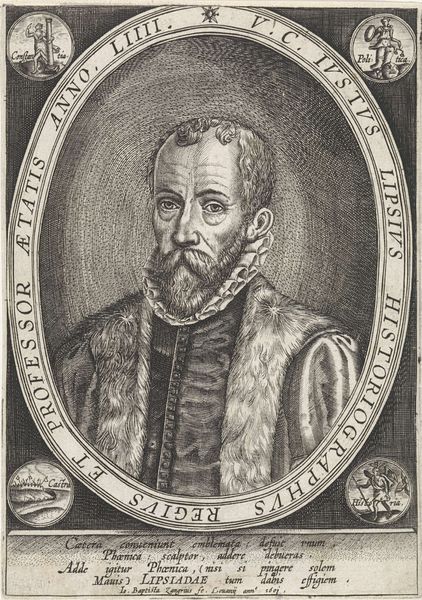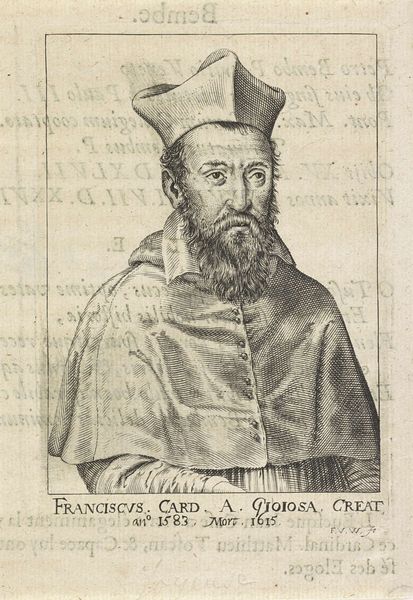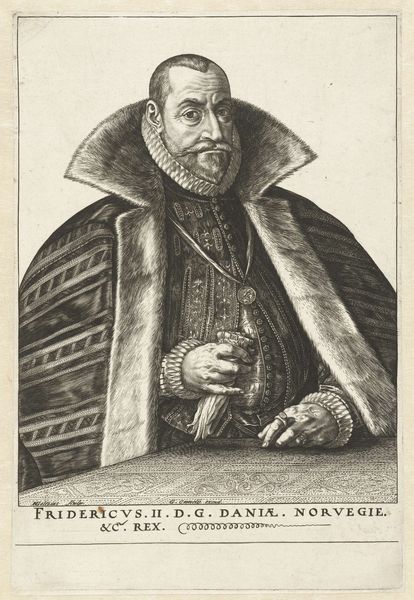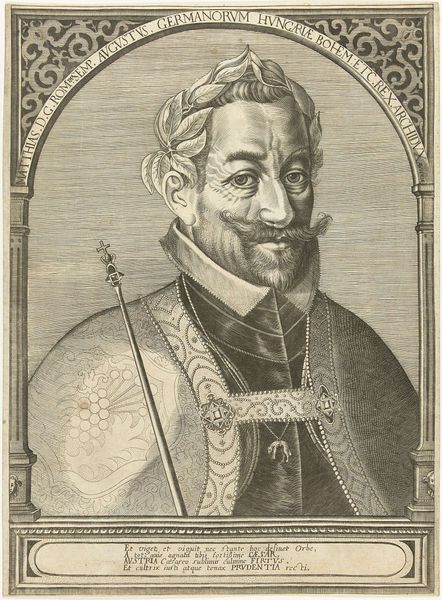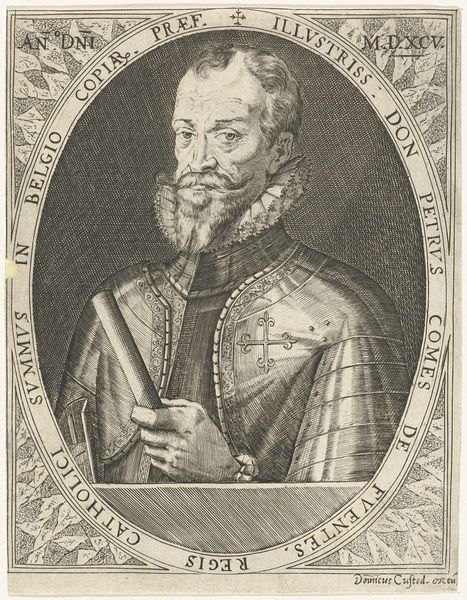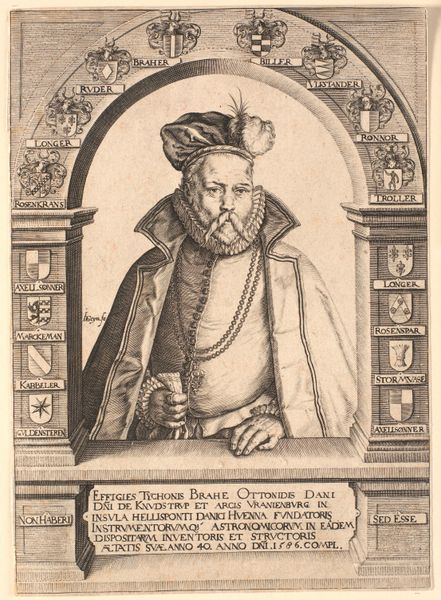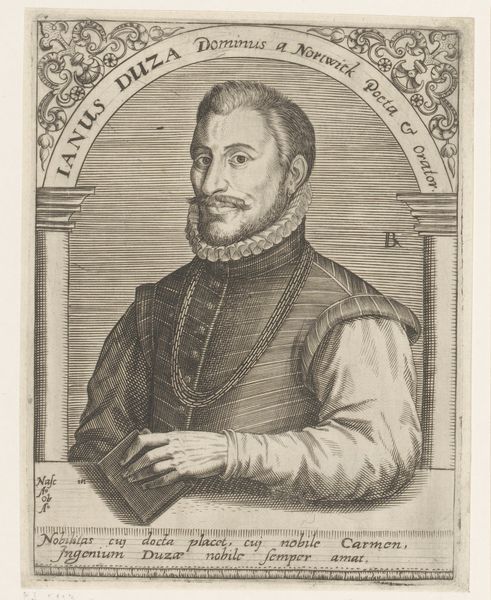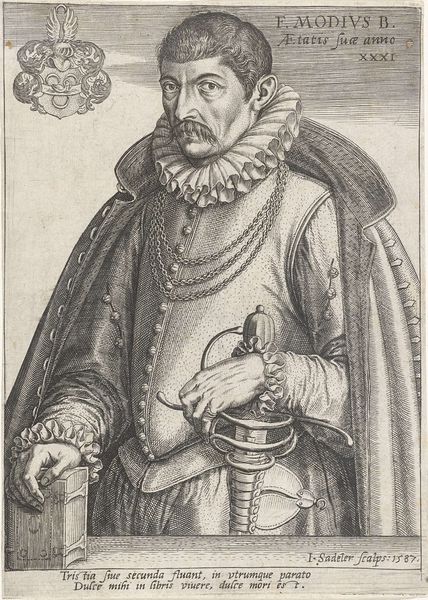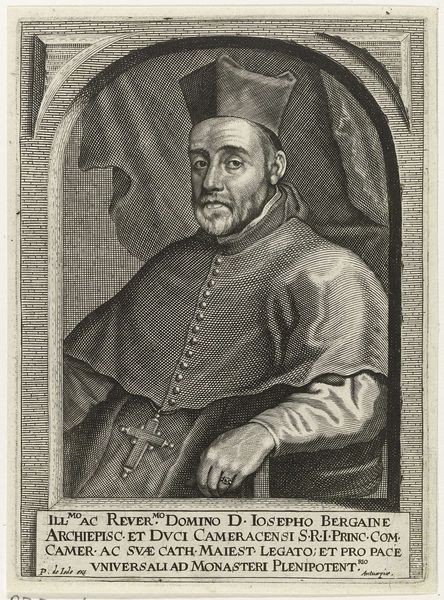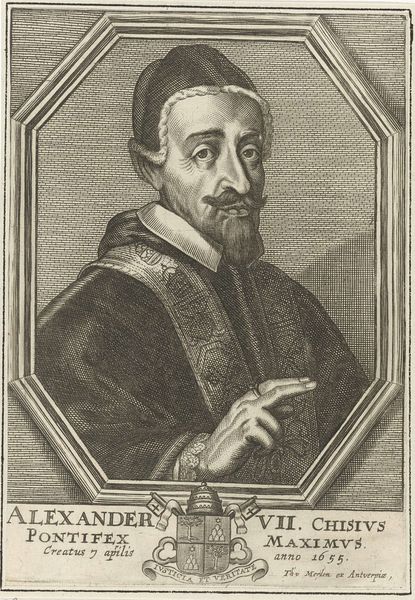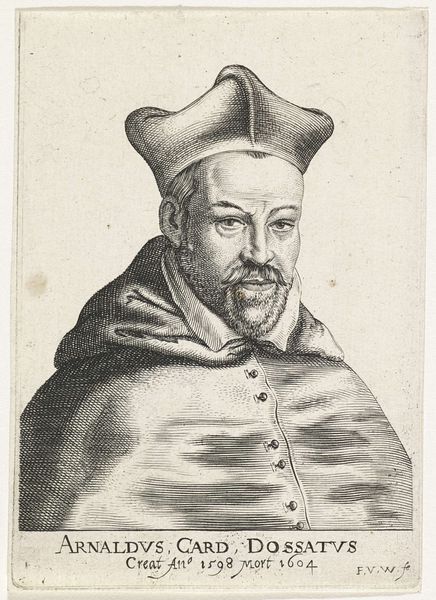
Portret van Albrecht Friedrich, Markgraaf van Brandenburg. 1550 - 1587
0:00
0:00
abrahamdebruyn
Rijksmuseum
print, engraving
#
portrait
# print
#
old engraving style
#
11_renaissance
#
history-painting
#
northern-renaissance
#
engraving
Dimensions: height 172 mm, width 122 mm
Copyright: Rijks Museum: Open Domain
Curator: Here at the Rijksmuseum, we have a striking engraving of Albrecht Friedrich, Margrave of Brandenburg. Abraham de Bruyn created it sometime between 1550 and 1587. What's your immediate reaction to this portrait? Editor: It projects authority, no question, but it feels…stilted. I mean, look at his hand. Is it relaxed or tensed? Is he grasping power or holding it precariously? I sense a controlled performance, burdened by expectation. Curator: Note how de Bruyn uses a dense network of fine lines to define the texture and volume. Observe especially the fall of light on his elaborately patterned cloak and doublet. There is no use of broad strokes; the graphic quality seems built up gradually. Editor: Precisely. Look closely at the layers upon layers of clothing—the high collar, the weighty chain of office. These visual cues signal social standing but simultaneously imply constriction, a lack of ease. He *performs* rank and its privileges. Who benefitted from perpetuating the mythology of aristocratic, male entitlement? Curator: De Bruyn meticulously renders every detail, from the individual hairs of the Margrave’s beard to the heraldic shield floating at the upper left. Through sheer exactitude, the artist asserts the enduring significance of his subject. Editor: What end does that "enduring significance" serve, though? Images like these reinforced hierarchies of power and validated the status quo, a system where privilege was concentrated among very few and violently denied to very many. Art wasn't merely a reflection, but an active participant. Curator: Fair enough. Still, consider the work's masterful execution, a true display of technical prowess. Editor: The engraving is, undoubtedly, striking in its detail. But, for me, its most profound resonance resides in understanding its historical position as a shaper of the social narrative. We learn just as much about who was being excluded by gazing at the included. Curator: An interesting reading, and one that shows how varied perspectives bring added value when discussing an artwork's position. Editor: Exactly, and to see its relevance today!
Comments
No comments
Be the first to comment and join the conversation on the ultimate creative platform.
